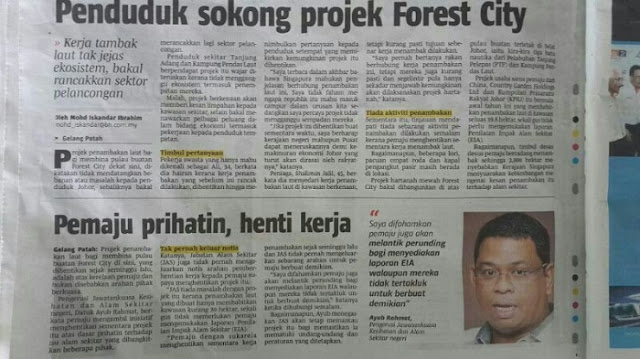Merambong Shoal, Johor.
What Happened?
In the past, losses of seagrass communities
in coastal area of Malaysia caused either by natural causes or human activity
generally passed unnoticed or unrecorded. Decline and losses of seagrass
particularly in many places in Malaysia including seagrass beds of Sungai Pulai
estuary, Johor are abrupt and due to human activities. A good example was those
in Sungai Pulai estuary, Johor of Tanjung Adang Darat seagrass shoal, which was
at risk in 1998 and totally disappeared in 2003 due to dredging of the shallow
shipping passageways and land reclamation for the development of new port
facilities. Starting in February 2014, more land reclamation was planned to
reclaim part of the Sungai Pulai estuary including seagrass bed of Merambong.
Current status of reclamation work in Sungai Pulai estuary specific to seagrass
bed of Merambong is reported and discussed based on observation through
repeated visits to the seagrass area.
What are the impacts?
The seagrass
bed in Merambong shoal is the largest seagrass bed in Malaysia. Species that
can be found at Merambong shoal are Syringodium
isoetifolium, Halodule pinifolia, Halodule uninervis, Cymodocea serrulata,
Thalassia hemprichii, Halophila ovalis, Halophila minor and Halophila
spinulosa. All of this species will be endangered because of land
reclamation can destroyed this entire species. Other than that, seagrass also
is a main diet for dugongs at Merambong shoal. Other marine species also will
get the impact where the habitat for those species will be destroyed.
Can it be solved and how?
This
problems can be solved by replanting the seagrass on the different places near
Merambong shoal.



No comments:
Post a Comment